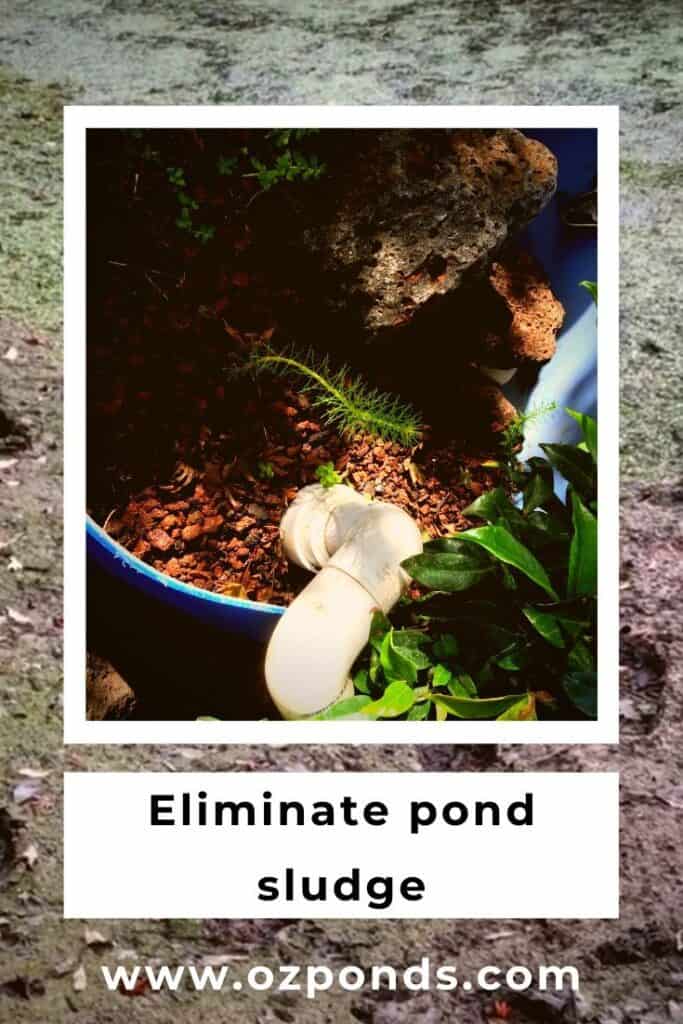Pond sludge can really look unsightly, if left unchecked it will become thicker and thicker and may cause problems.
We all want beautiful clear water, low maintenance and of course no sludge!
Below is an outline of some strategies that will help eliminate any problems you have with pond sludge, so you can get back to loving and enjoying your pond.
Stop storm water entering the pond
Quite often we think it makes sense to build a pond in the lowest part of our yard. This will help keep it full right?
Well yeah but it also allows everything else to flow into the pond! Think leaves, lawn clippings, fertiliser, mulch etc.
When all this other debris flows into the pond it sinks to the bottom.
Once it sinks to the bottom it begins to decompose, and here is the beginning of a layer of sludge. Grrr.
Before i knew any better i made this mistake. I got the excavator man to dig me a nice big pond on the lowest point of my block. Just look at it now…It’s a quagmire!
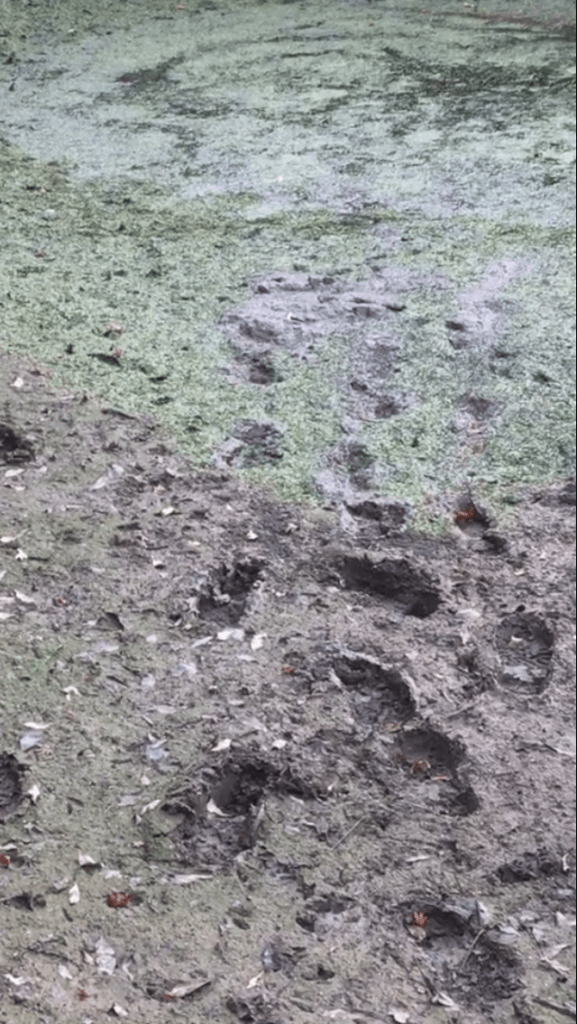
The problem is as the “stuff” that finds its way into the pond breaks down it releases nutrients.
Something needs to remove the nutrients, so along comes algae. Now the algae does a great job at consuming the nutrients. Once it has eaten its fill it dies of and sinks to the bottom.
Well guess what happens? The nutrients the algae consumed are now released back into the water. So what happens?
Yeap, you guessed it more algae grows. Now this cycle goes on and on. Algae growing, algae dying and sinking to the bottom.
What happens? That layer of sludge just keeps getting thicker and thicker!
So how do we fix it?
If possible install a drain system to divert storm water away from the pond.
Or create planted zones in the path the water travels. Like little mini wetlands. The plants will help to capture some of the debris before it enters the pond.
Lastly increase the filtration of the pond. These are the steps i am currently taking to fix my low lying pond.
So let’s talk about filtration.
Mechanical filtration
Mechanical filtration is the fancy term for “removing crap from the water”.
Diverting the storm water and placing plants in the waters path could be considered forms of mechanical filtration because they “remove crap from the water.”
But what about the stuff that just falls in?
Even if we build our ponds in an area that doesn’t have an issue with storm water. Stuff will still fall in!
Those autumn leaves quickly spring to mind. So now we have the same problem.
Debris is getting into the pond, sinking, decomposing and releasing nutrients.
Oh great here we go again!
Wait, wait! Don’t panic!
Those clever pond manufactures have created a simple solution. It’s called a skimmer.
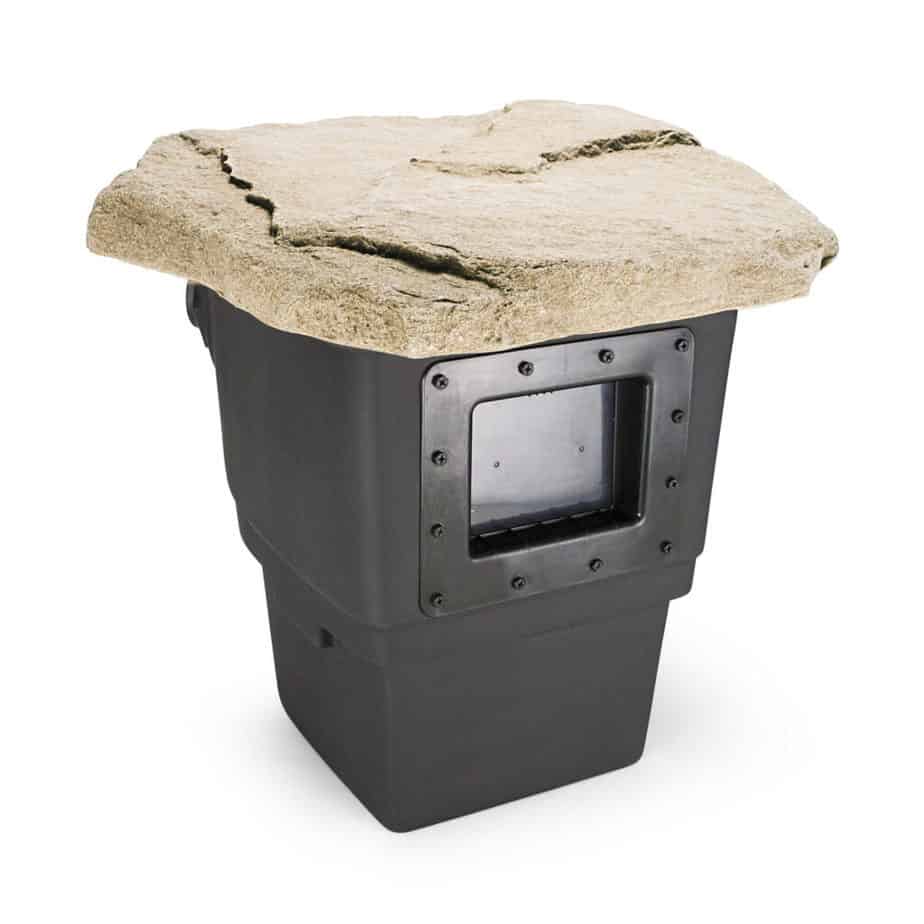
Basically a skimmer is a box that houses the pump. The box has a little door on it called a weir.
As the water is pulled through the weir door it creates tension on the waters surface.
This draws any floating debris into the skimmer. Within the skimmer is a net or basket that collects the stuff.
You can buy a skimmer or build your own. I’ve built a couple with varying levels of success.
Im about to try out the aquascape signature series pond skimmer pictured above. I’ll let you know how it goes.
The other type of filtration that is really important to eliminating sludge is biological filtration.
Increase biological filtration
Biological filtration is the fancy way of talking about living filters.
Living filters?
All ponds have living filters (biological filters). The moment a pond is built it starts to team with life. Most of us think of the creatures we can see: fish, water boatmen, frogs, tadpoles ect.
Its what we don’t see that is having a tremendous impact on the quality of water within the pond. It’s referred to as the “nitrogen cycle“. You can click the link to read a quick guide.
Heres the quick gist:
-Things that sink to the bottom of the pond and decay release ammonia, so do fish.
-Ammonia is a source of food for algae. It’s also harmful to aquatic life.
-So along come some good bacterias to convert the ammonia into nitrite.
-Nitrite still is good for algae and bad for aquatic life.
-But another type of bacteria converts the nitrite to nitrate. This is relatively harmless to aquatic life, yet still a food for plants (including algae).
The main thing i want you to takeaway is that bacteria in your pond is good!
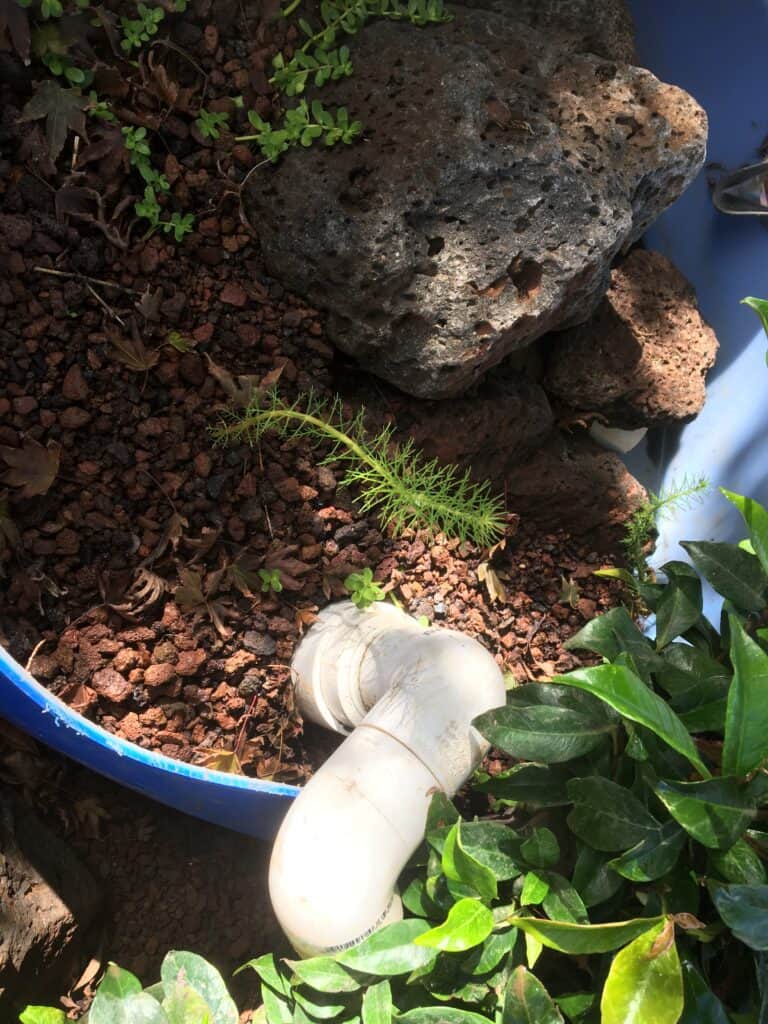
These bacteria will show up without you doing anything. They will colonise every submerged surface in the pond.
Now here’s the thing more surfaces = more good bacteria.
The more bacteria, the more organic materials and fish waste that can be consumed!
So if we can create more surface area…….We increase our biological filter!
So how do we increase the surface area in a pond?
Its really easy add rocks and pebbles. Every pebble, every rock provides added surfaces for bacteria to grow on and help purify the water.
If you want to take your biological filtration to the next level i highly recommend adding a bog or wetland filter.
These filters are completely natural, require practically zero maintenance and not only provide huge amounts of surfaces for the bacteria, but they contain plants that will soak up any excess nutrients.
And remember less nutrients means less algae! Less algae = less sludge.
The second advantage to providing a home for the good bacterias is that the they will actually consume and break down any sludge layer that does form.
The next tip is adding oxygen.
Add more oxygen
So now you kind of understand the importance of bacteria in the pond.
As i mentioned adding a bog or wetland filter is a great way to supercharge the amount of bacteria in the pond.
The next best way to supercharge these valuable little bacteria is to give them plenty of oxygen!
You could do this by adding an aerator and air stone.
Or my favourite way adding a stream or creek and a waterfall!
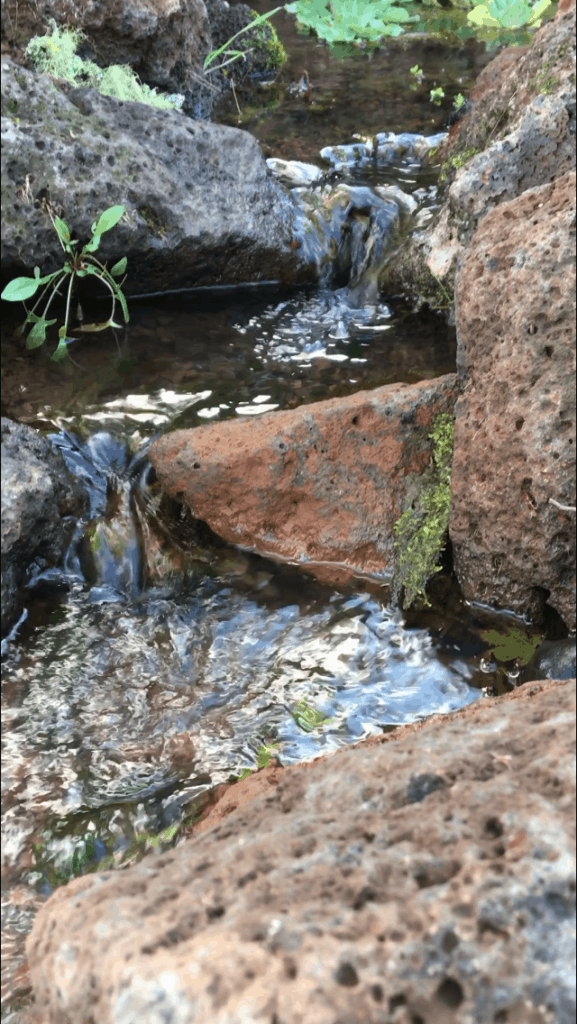
For the purpose of sludge removal the use of an aerator and air stone are very cost effective and easy to install.
Placing the air stones on the bottom of the pond will deliver oxygen directly to the bacterias that are consuming they layers of sludge down there.
The other advantage is that the bubbles will dislodge small pieces of sludge and send them to the surface.
Once at the surface they will be dragged over to your skimmer.
Again very little maintenance required. 😉
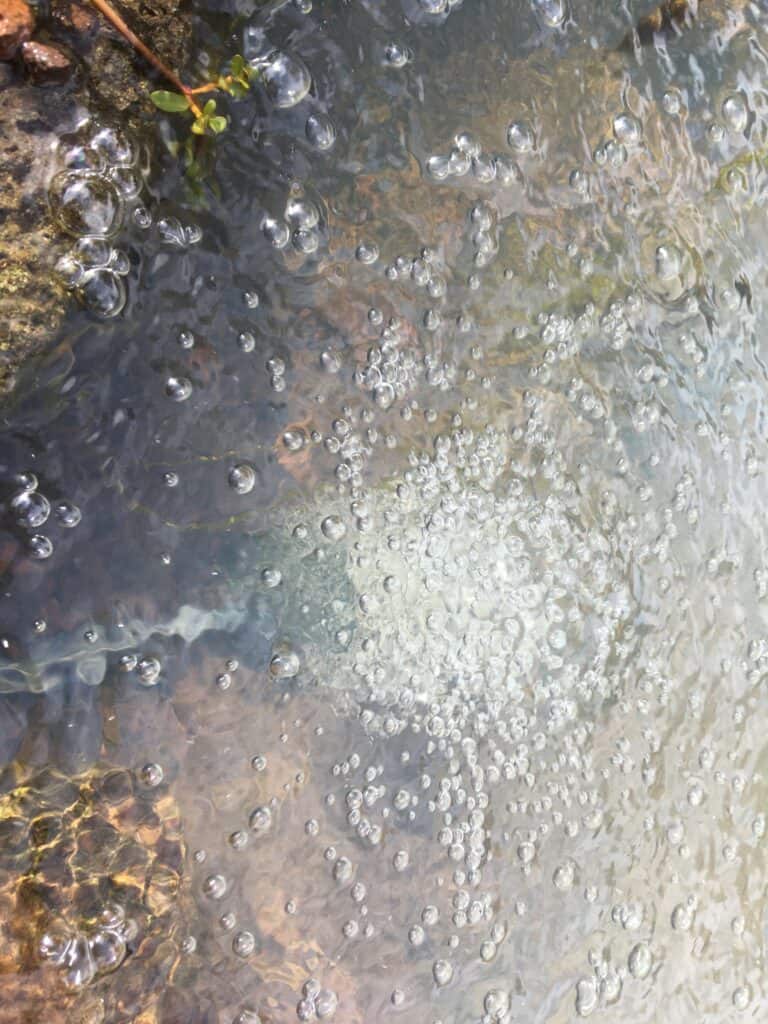
Adding fish/ kids
Every pond should have some fish.
They are important to the overall ecosystem of the pond. Every ecosystem needs a predator and in a pond the fish are it.
Fish will consume any mosquito larvae that try and call your pond home.
Fish will also graze on algae.
Fish will forage around the bottom of the pond kicking up debris. This is a good thing, it will float to the surface and be taken care of by the skimmer.
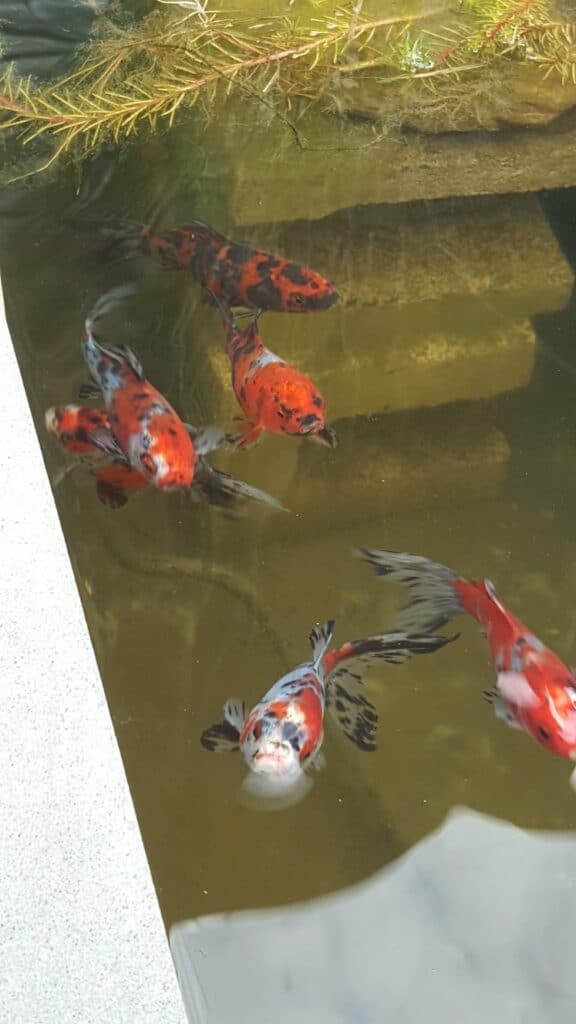
Of course fish will also produce waste and put pressure on the ponds biological filtration.
So it’s very important that the filtration can support the amount of fish in the pond.
A good indication that the biological filter is struggling is if the water appears green.
Fish are a great addition to helping manage sludge provided that the sensible stocking rules are followed.
Another great way to stir up the pond and any sediment on the bottom is let the kids get in there.
I always let the kids jump and splash around in the ponds. They stir it up good and proper!
The next morning all that debris has been deposited into the bog or wetland filter via the skimmer.
The pond has had a good clean out and i didn’t do a thing!
Adding bacteria and enzymes
Even with plenty of surface areas built into the pond it doesn’t hurt to add specially blended bacterias and enzymes to help break down pond sludge.
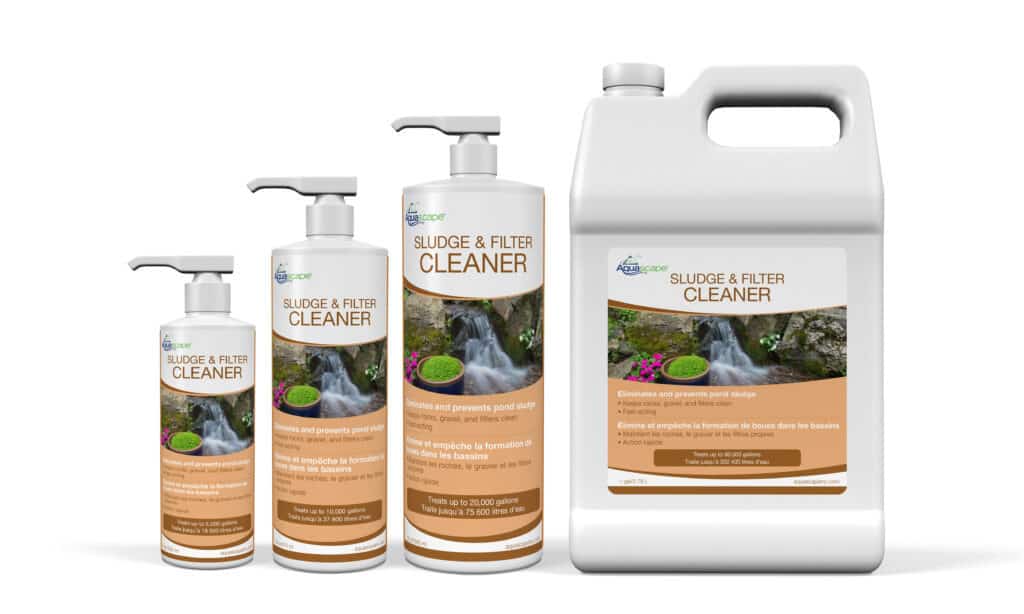
These good bacterias are most effective in water temperatures over 10C (50F).
So during winter they may have gone dormant or died.
Don’t worry they will return naturally. But if you want to give them a kickstart you can add them when the water gets warm enough.
A good old clean out
Sometimes the sludge has just gotten so thick that it becomes an ecosystem in itself.
Once this happens it almost feeds itself. The break down of materials within the sludge is releasing all kinds of gasses and nutrients that feeds all kinds of plant growth.
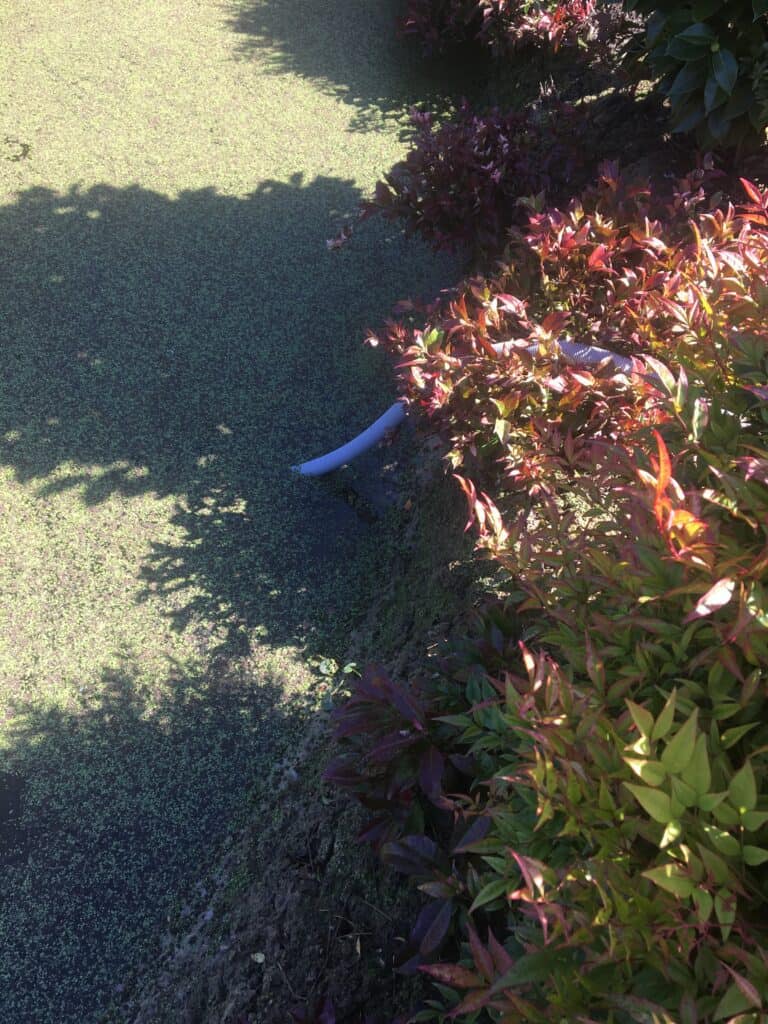
Of course the plant growth has a cycle and all this organic material falls into the pond.
And round and round we go.
This can be especially problematic in very cold areas with snow.
Autumn debris falls into the pond. The snow and ice seal it in place and the bacterias are dormant. More debris gets stuck in the snow.
Then the thaw comes. But its still too cold for the bacteria.
In these situations it’s time to drain the water and physically remove all the crap!
Conclusion
Sludge can be a real pain in the butt! Yet it doesn’t have to be.
Implementing the above strategies will help keep you pond sludge free. Allowing you to spend more time enjoying your beautiful water feature and less time cleaning it.
Thanks for reading, hopefully it was helpful. 🙂
Subscribe
If you haven’t already make sure to subscribe to our email list for exclusive discounts and offers on pond related equipment and supplies.
